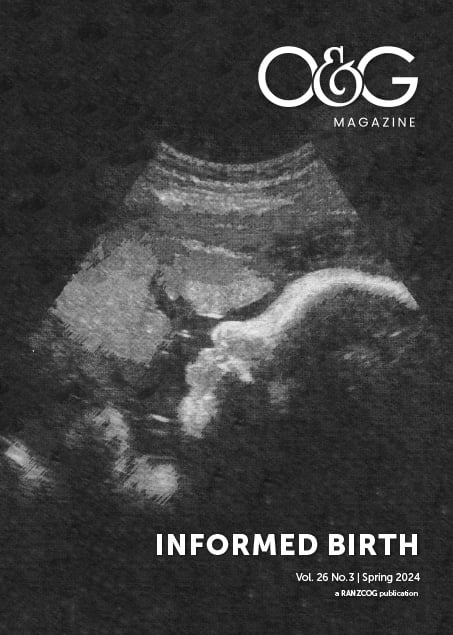The birth of a child is a momentous and memorable occasion for any parent. In recent years, there has been increasing recognition of how birth experiences can trigger physical and psychological distress with profound, long-term consequences. This year, two significant enquiries into birth trauma were published. The first was from the UK, titled: “Listen to Mums: Ending the postcode lottery in perinatal care”.1 The second, closer to home, was the NSW Parliament Legislative Council Select Committee on Birth Trauma report2. Both reports highlighted the importance of better education for women on birth choices and support for maternity care providers to undertake training in informed consent.
Furthermore, a survey by Australasian Birth Trauma Association revealed 1 in 3 birthing parents agreed to birth interventions without fully understanding the risks. This issue of the O&G magazine has been in planning for some time. It seemed opportune to explore informed birth in light of increasing evidence of the urgent need for informed, structured discussions prior to birth.
At the core of informed birth is respect for a woman’s autonomy and her right to make decisions about her own body and her birth. This requires a shift from a paternalistic healthcare model to one that is woman-centred and collaborative. Central to this is the provision of accurate, evidence-based, comprehensive, unbiased information in easy-to-understand language. It also includes providing detailed information where there is a lack of evidence for a particular intervention or course of action.
As healthcare providers, we play a pivotal role in promoting informed birth. If we are to do our job as educators, we need training not only in the technical aspects of childbirth, but also in effective communication and cultural competence. Having provided the information and listened to women’s concerns, we must create opportunities for ongoing dialogue. The challenge we face in practice is our duty to continue to provide care and support women’s choices when they differ from standard practices and guidelines. Negotiating these differences requires relationship building, creating trust between the woman and her healthcare provider. I am reminded of the words of a pregnant woman I recently cared for who thanked me for treating her ‘like a whole person, not just a collection of risk factors’.
Informed birth should not be just a lofty ideal; it should be a practical and achievable goal that can transform the childbirth experience for women everywhere. By empowering women with knowledge and supporting their choices, we can create a more respectful, safe, and positive birth experience. Whether the choice an individual woman makes is that of a caesarean birth at maternal request or a birth with no intervention, both are equally deserving of support, with appropriate counselling. The time for action is now. I hope this issue will help us make informed birth a cornerstone of maternity care in Australia and Aotearoa New Zealand.






Leave a Reply